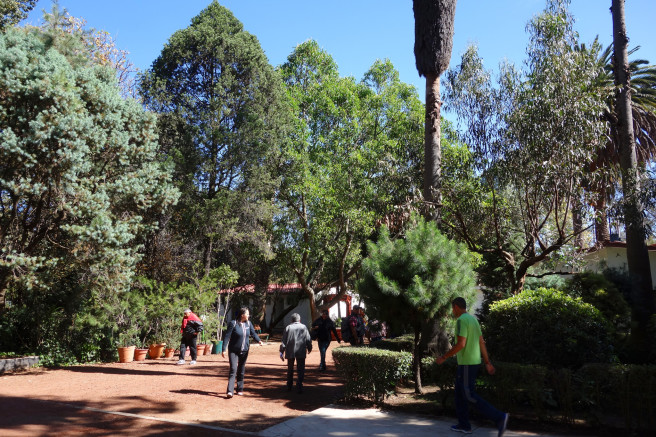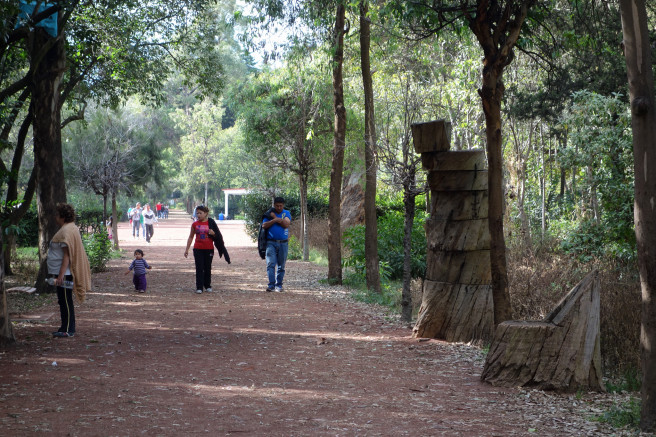Viveros de Coyoacán

Joseph Heathcott
Joseph Heathcott is a writer, photographer, and educator based in New York where he teaches at The New School. He has been taking pictures since a young age, when he learned to shoot on his father's 1968 Mamia Sekor TL1000. His visual work has appeared in books, magazines, exhibits, and juried art shows. His most recent book is Global Queens: An Urban Mosaic (Fordham University Press 2023), featuring 280 of his photographs. He lives in Queens with his wife, Ashley Cruce, and two cats, Radar and Guadalupe.
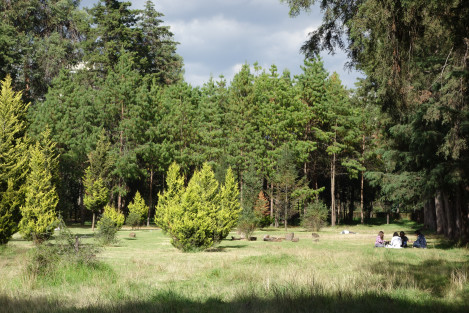
A small group of young people hang out on one of the sunny lawns between the allées of trees, while another visitor stretches out for a nap.
Amidst the seemingly endless sprawl of concrete and asphalt that comprises Mexico City's landscape, there is a place where you can sit in a tree-rimmed meadow and listen to the morning calls of robins and warblers, the hammer of a woodpecker and the gentle thrum of the hummingbird. Viveros is a 96-acre park located in the southern municipality of Coyoacán, a vital green space in the heart of one of the world's greatest conurbations. I have spent many pleasant hours wandering around its expansive grounds, taking advantage of the shade and oxygen provided by the thousands of trees.
Viveros was founded and designed by the urban planner Miguel Angel de Quevado (1862-1946). Born in Mexico and raised in France, Quevado received his Bachelor of Science at the University of Bordeaux, then studied civil engineering and hydrology at the École Polytechnique in Paris. He returned to Mexico City in 1887 and worked in a variety of jobs, including as Director of Public Works and later as a high ranking official in the Secretariat of Agriculture, where he oversaw arboreal research and management. He founded the Central Committee of Forests and Tree Areas, which was the first environmental protection institution in Mexico.
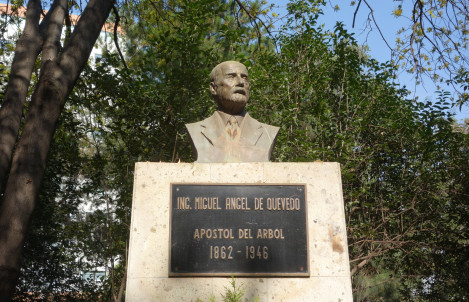
Statue of Miguel Angel de Quevado, the "Apostle of the Trees," greets visitors at the southwest gate of Viveros.
Quevado was part of a generation of wealthy, highly paternalistic urban reformers who believed in a direct correspondence between environment and behaviour, and that to modify the quality of one is to modify the other. To this end, they imagined that improving the physical conditions of housing, sanitation, and overcrowding would result in a more hygienic, productive, and well behaved population. Despite this moralistic vision, reformers racked up important achievements such as new social housing, a greatly extended sewer system, and parks and open spaces.
In 1901, Quevado donated the first hectare of land to what would become Viveros ("The nurseries") out of his own property. Over the next twenty years, the park grew through purchases of adjacent hacienda land. The municipal administration recognized Viveros in 1917, and in 1936, the federal government declared it a National Park. It also became home to several government institutions, including the National Forest Research Institute, the Secretariat of the Environment and Natural Resources, and the Secretariat for Public Works and Urban Development.
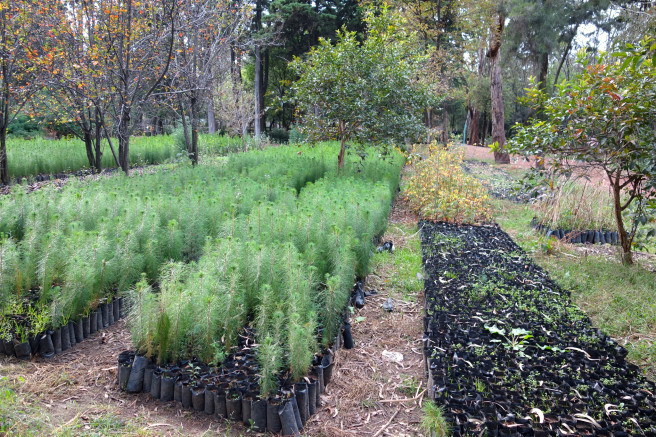
Evergreen saplings in starter pods at the Viveros tree nursery. When they are ready, crews will transfer them to parks, playgrounds, and street tree pits throughout the city.
Today, Viveros remains the city's principal tree nursery. Large areas are set aside for seedlings and saplings, which can be transplanted into parks, playgrounds, schoolyards, sidewalks, and restoration projects across the metropolis. There are also numerous allées of mature trees grouped by species, including sweetgum, ash, cedar, Chinese elm, jacaranda, acacia, pears, and various pines and eucalyptus. Such a diversity of trees, with their varied heights and structures, make Viveros a rich bird habitat and a major destination for bird watchers in the city.
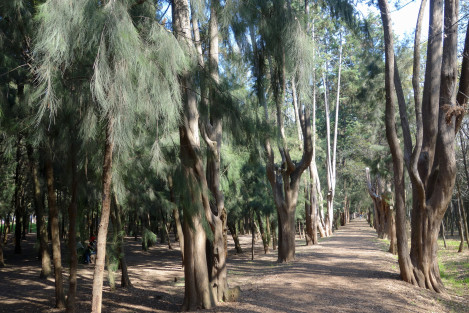
An allée of white cedar trees with their long soft needles and gnarled trunks, on the north side of Viveros.
In addition to the arboreal sections, areas are devoted to arid and semi-arid plants, with a large collection of cacti and succulents from the surrounding Valley of Mexico. These species are adapted to the saline conditions of Mexico City's soil, as well as to its high altitude and oscillating wet/dry seasons. There are also plants that thrive in the various pedregals- stony landscapes of basalt laid down through successive volcanic eruptions over time. Rounding out the arid and semi-arid section are species common to Oaxaca, Puebla, Chiapas, Vera Cruz, and other states.
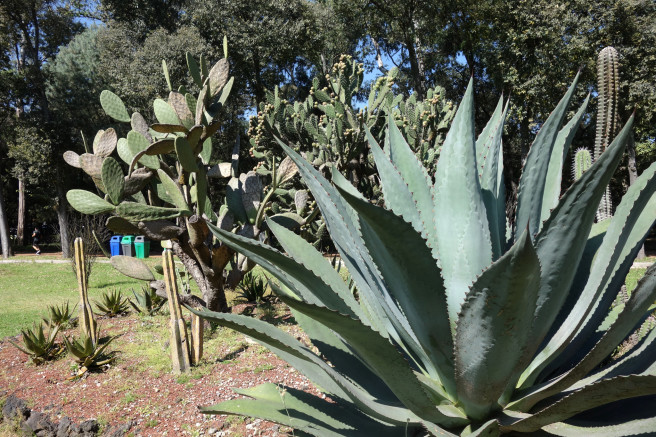
The semi-arid section includes blue agave, nopal, barrel cactus, and many other species important to Mexican ecology and culture.
Finally, the entire park is intersected with and encircled by pathways. Even with 2500 to 3000 visitors daily, the park seldom feels crowded as people fan out across the paths, meadows, lawns, playgrounds, and shady seating areas. Runners can use the peripheral path, while others can walk leisurely among the allées between the trees. A large workout station anchors the southeast side, along with playgrounds and basketball courts. At the centre of the park is a bullfighting practice ring where young toreadors train and perfect their craft. There are also areas dedicated to spiritual and religious practice, including a lawn for Tai Chi, an outdoor Buddhist temple and meditation ground, and a shrine to the Virgin of Guadalupe mounted to a tree.
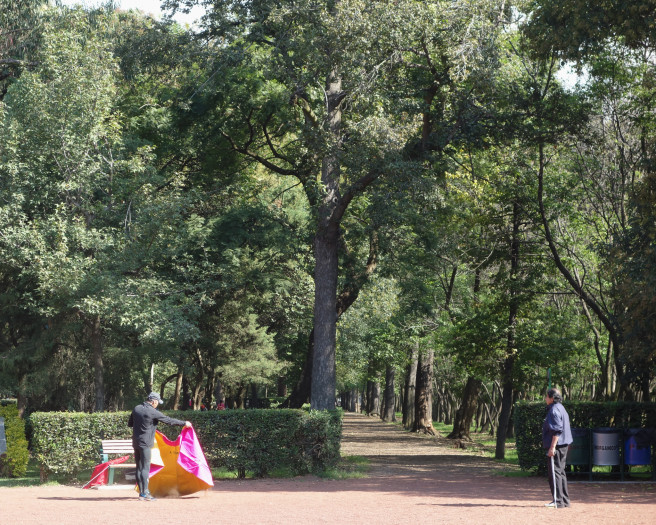
The great oval at the centre of Viveros is home to a toreador school, and park visitors can watch students and teachers practice their craft.
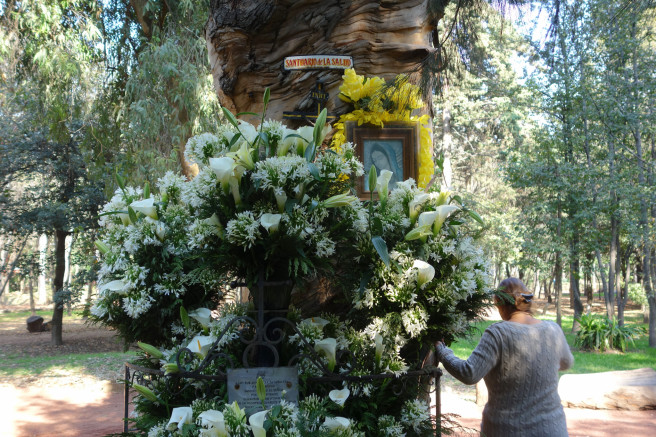
The sanctuary for health an iron grill decorated with white lilies, where parkgoers can pray to the Virgin of Guadalupe for health and healing.
At the northeast corner of the park is a large and popular Mercado de Plantas, a gardening centre with numerous vendors selling seeds, seedlings, flowers, pots, statuary, equipment, soil and fertilizer. The centre maintains a large display of botanical species, especially of flowering plants and a herbarium for cooks and healers. Every year at Christmas the center hosts a manger diorama competition, with elaborate scenes recreating the birth of Jesus in Bethlehem.
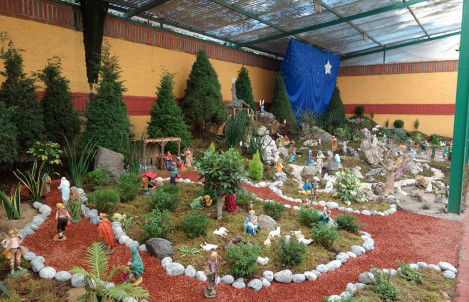
One of a dozen entries in the annual Christmas competition that features elaborate dioramas depicting the birth of Jesus, blending Biblical and folk stories.
Weekends find the park packed with people from the surrounding neighbourhoods of Florida, Axotla, San Ángel, Del Carmen, Santa Catarina, and Xoco. Adding to their numbers are visitors from more distant areas of the city drawn to the calm green landscape and varied activities on offer at Viveros. In addition to visiting the playgrounds and workout stations or watching the toreadors at practice in the central oval, parkgoers can enjoy weekend events such as art festivals, concerts, and plays.
Weekdays bring a different rhythm to the park. Runners, joggers, and bird watchers stream into Viveros as early as 6am when staff open the gates. By mid-morning, the traffic noise from the six-lane Avenida Universidad crescendos along the western edge of the park. Most of the joggers have cleared out, and the playgrounds fill with pre-school children. As 1pm approaches, workers from surrounding areas begin filing into the park to eat packed lunches, followed in the 3-4pm range by small groups of high school kids who use the park to cut through or to hang out after the last bell. Families stroll into and out of the park from 4-6pm, imbibing ice cream, paletas, and snacks from the many vendors that cluster around the gates. Finally, at 6pm, the gates close and staff usher people out for the night.
Despite its origins in a paternalistic middle class vision of a conflict free urban future, Viveros today is one of the world's great urban parks and a crucial breath of life for Mexico City. Its trees not only take in tons of carbon dioxide and return oxygen, but they also metabolise pollution, reduce surface temperature, slow rainwater infiltration, and shade the world. The trunks, branches, roots, and canopy also provide interlacing habitat for diverse species of mammals, reptiles, birds, insects, and fungi.
- Fountain and snack vendors in a small public square at the southeast corner of Viveros.
- Newly prepared sapling containers in the nursery.
- A long allée of tall, straight pine trees on the north side of Viveros.
- Striking red flowers of the Fuchsia plant, a succulent that grows natively in semi-arid coastal and montaine slope regions of southwest Mexico.
- The nopal cactus and its bloom of sweet prickly pear fruit, with various deciduous trees rising up in the background.
- Heavily canopied southeast portion of Viveros, with the wall of a school that backs onto the park.
- One of the many horticultural and garden supply vendors at the Mercado de Plantas, located at the northeast corner of the park.
- Hundreds of ceramic pots on offer at the Mercado de Plantas.
- Wide range of herbs on offer in the Mercado de Plantas, supplied for a wide variety of cooking, healing, and aesthetic uses.


